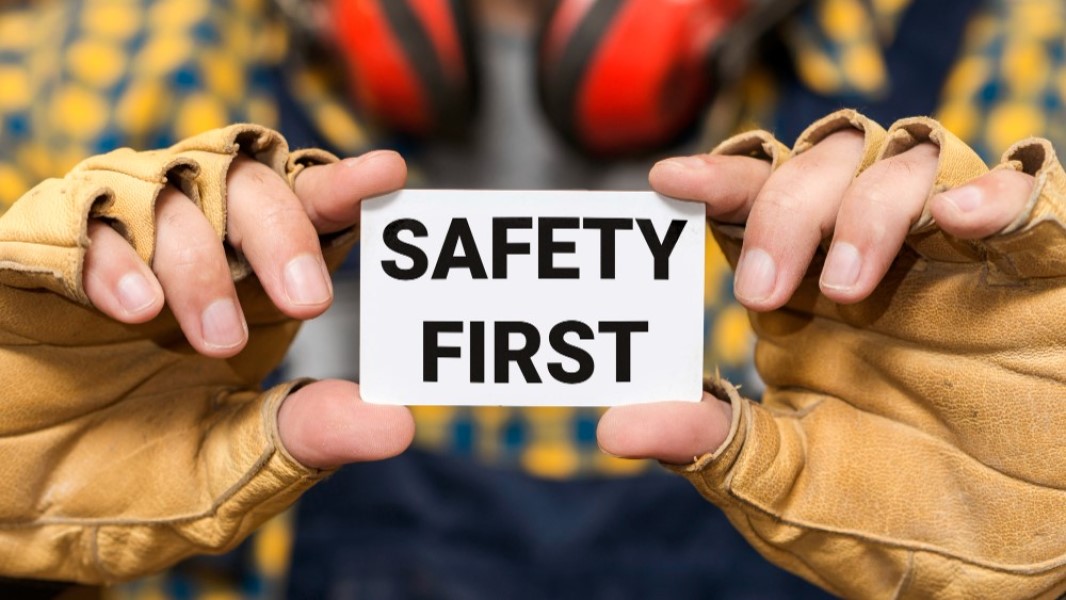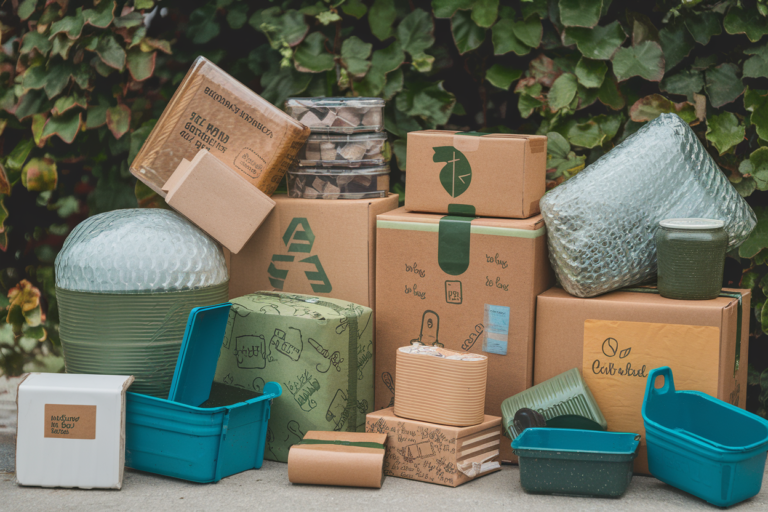Essential First Aid Kit at Workplace: You Need to Know
Workplace safety is paramount, and having a well-equipped first aid kit is a crucial component. In this comprehensive guide, we will delve into the essential items that should be included in a workplace first aid kit. From basic bandages to life-saving equipment, we’ve got you covered. Read on to ensure your workplace is prepared for any unforeseen emergencies.
What is First Aid?
First aid refers to the initial care and assistance provided to a person who has been injured or is suddenly taken ill. It is the immediate response given before professional medical help arrives. The goal of first aid is to stabilize the injured person’s condition and prevent further harm until they can receive proper medical attention. This may include actions like administering CPR, applying bandages, providing basic life support, or offering comfort and reassurance. First aid skills are crucial in various emergency situations, such as accidents, sudden illnesses, or natural disasters, and they can make a significant difference in the outcome for the injured person.
OSHA First Aid Kit Requirements for 23
OSHA (Occupational Safety and Health Administration) has specific requirements for first aid kits in workplaces to ensure the safety and well-being of employees. These requirements vary depending on the nature of the work and the potential hazards present in the environment.
For workplaces with 23 or more employees, OSHA typically mandates that a first aid kit should contain, at a minimum, the following items:
- Adhesive bandages (commonly known as Band-Aids) in various sizes.
- Sterile gauze pads for cleaning wounds and applying ointments.
- Antiseptic wipes to clean wounds and prevent infection.
- Tweezers and scissors for precise wound care.
- Disposable gloves to protect against cross-contamination.
- Pain relievers (such as aspirin or ibuprofen) for minor aches and pains.
- CPR mask for providing rescue breaths in critical situations.
- Emergency blanket for regulating body temperature in emergencies.
- Instant cold packs for quick relief of swelling.
- Triangular bandages for versatile first aid applications.
- Safety pins for securing bandages and creating slings.
- Flashlight for emergencies with poor lighting conditions.
- Whistle for attracting attention in noisy or chaotic situations.
- Sterile eyewash for immediate treatment of eye injuries.
- Burn gel specifically designed for burn injuries.
- Thermal blanket for regulating body temperature in emergencies.
- Adhesive tape for securing bandages and dressings in place.
- Eyewash cup for targeted treatment of eye injuries.
In addition to these items, OSHA may require other specific supplies or equipment based on the workplace’s unique hazards and risks. Employers are responsible for regularly inspecting and restocking first aid kits to ensure they are adequately equipped to handle potential emergencies.
Please note that these requirements may be subject to change, so it’s important to consult the official OSHA guidelines or seek advice from a certified safety professional for the most up-to-date information.
3 Reasons to Keep a First Aid Kit at Workplace
- Immediate Response to Injuries and Emergencies: Accidents and injuries can occur unexpectedly in any workplace. Having a well-equipped first aid kit readily available allows for immediate response and treatment. This timely intervention can make a significant difference in stabilizing a person’s condition before professional medical help arrives. It can be particularly crucial in cases of minor cuts, burns, or sprains, where quick action can prevent complications or further harm.
- Promotes a Culture of Safety and Preparedness: Providing a readily accessible first aid kit demonstrates an employer’s commitment to the safety and well-being of their employees. It sends a clear message that the organization values the health and safety of its workforce. This not only fosters a positive work environment but also instills a sense of confidence and security among employees, knowing that their employer is proactive in addressing potential emergencies.
- Compliance with Legal and Regulatory Requirements: Many countries have specific legal requirements and regulations regarding workplace safety, which include the provision of first aid facilities. By maintaining a well-stocked first aid kit, employers not only ensure the well-being of their employees but also comply with legal obligations. This helps protect the organization from potential legal liabilities in the event of accidents or injuries.
In summary, having a first aid kit in the workplace is not only a matter of legal compliance but also a fundamental aspect of ensuring the safety, well-being, and confidence of employees. It enables immediate response to injuries, promotes a culture of safety, and demonstrates a commitment to employee welfare.
Seven Tips for First Aid at Workplace
Certainly! Here are seven essential tips for providing first aid in the workplace:
1. Familiarize Yourself with the First Aid Kit:
Take time to get acquainted with the contents of the workplace first aid kit. Know where it is located and understand how to use each item. Regularly check and restock supplies to ensure everything is up-to-date.
2. Assess the Situation and Ensure Safety:
Before approaching an injured person, assess the scene for potential hazards. Ensure both your safety and the safety of the victim. If the situation is too dangerous, wait for professional help to arrive.
3. Prioritize Breathing and Circulation:
In critical situations, focus on maintaining the victim’s breathing and circulation. Perform CPR if necessary, and use an automated external defibrillator (AED) if available and trained to do so.
4. Attend to Minor Injuries Promptly:
For minor injuries like cuts, burns, or sprains, provide immediate care using items from the first aid kit. Clean and dress wounds, apply ice packs for swelling, and provide pain relief if necessary.
5. Communicate Clearly and Comfort the Victim:
Keep the injured person informed about what you’re doing. Reassure them and maintain a calm and comforting demeanor. This can help reduce anxiety and promote a sense of security.
6. Seek Professional Medical Help When Needed:
While first aid is crucial, it’s not a substitute for professional medical care. If an injury or illness is severe, or if you’re uncertain about the appropriate treatment, call for an ambulance or seek medical attention promptly.
7. Document the Incident:
After providing first aid, it’s important to document the incident. Record details such as what happened, the care provided, and any witness statements. This information may be valuable for insurance claims or workplace safety reports.
Remember, proper first aid training is essential for anyone designated to provide first aid in the workplace. Additionally, it’s important to stay updated on first aid techniques and best practices through regular training and refresher courses. By following these tips and being prepared, you can help ensure the safety and well-being of your colleagues in the workplace.
The Significance of an Adequate First Aid Kit
In any workplace, accidents and injuries can occur unexpectedly. Having an up-to-date and well-stocked first aid kit can make a significant difference in providing immediate care while awaiting professional medical help.
Understanding Workplace-Specific Needs
Different workplaces have varying risks and potential hazards. It’s essential to tailor your first aid kit to your specific work environment. For instance, a construction site may require more robust equipment compared to an office setting.
The Comprehensive Checklist
A well-prepared first-aid kit should contain the following essentials:

Essential First Aid Kit at Workplace: You Need to Know
Adhesive Bandages: The Basics
Adhesive bandages, commonly known as Band-Aids, are a staple in any first aid kit. They are designed to cover minor cuts, scrapes, and wounds, providing protection against dirt and bacteria.
In a workplace setting, where small injuries are common, having an ample supply of adhesive bandages is essential. Ensure you have various sizes to accommodate different wounds.
Sterile Gauze Pads: Absorbing Wounds for Quick Healing
Gauze pads are a versatile tool in first aid. They are used to clean wounds, apply ointments, and provide a barrier against infection. Ensure you have sterile gauze pads in your kit to handle various types of injuries.
Antiseptic Wipes: Keeping Wounds Clean and Infection-Free
Antiseptic wipes are crucial for cleaning wounds before dressing. They help prevent infections and promote faster healing. Including a sufficient number of antiseptic wipes in your first aid kit ensures that you can properly clean and treat wounds.
Tweezers and Scissors: Precision Tools for Wound Care
Tweezers and scissors are invaluable for removing splinters, debris, or cutting tape and bandages. Ensure they are of good quality and kept sterile to avoid any further harm when attending to injuries.
Disposable Gloves: Protecting Both the Rescuer and the Victim
In any first aid situation, protecting against cross-contamination is paramount. Disposable gloves create a barrier between the rescuer’s hands and the victim’s open wound. Ensure you have an adequate supply of disposable gloves in your kit.
Pain Relievers: Alleviating Discomfort in Emergencies
Including a small box of pain relievers can be a comfort to someone experiencing pain. However, it’s important to note any allergies or medical conditions of individuals before administering any medication.
CPR Mask: A Life-Saving Device
In a critical situation where CPR is necessary, a CPR mask provides a safe way to deliver rescue breaths. This mask is a crucial addition to any workplace first aid kit, ensuring proper ventilation during resuscitation.
Emergency Blanket: Regulating Body Temperature
An emergency blanket, also known as a space blanket, is a lightweight, compact tool that helps retain body heat in emergency situations. It’s particularly important in cases of shock or exposure to extreme weather conditions.
Instant Cold Packs: Swift Relief for Swelling
Instant cold packs provide quick relief for injuries causing swelling or inflammation. They are especially useful for strains, sprains, or bruising. Ensure you have a few in your kit to address these common workplace injuries.
Triangular Bandages: Versatility in First Aid
Triangular bandages are incredibly versatile. They can be used as slings, tourniquets, or even as a makeshift bandage. Having a few of these in your kit ensures you’re prepared for a range of injuries.
Safety Pins: Holding It All Together
Safety pins are an often-overlooked essential in a first aid kit. They can be used to secure bandages, create slings, or even improvise splints. Having a selection of safety pins ensures you can adapt to different situations.
Flashlight: Shedding Light on Emergencies
In emergencies where lighting is poor, a flashlight is indispensable. It aids in examining injuries, finding items in the dark, and signaling for help. Ensure your flashlight is in working order and has extra batteries.
Whistle: Catching Attention in Emergencies
A whistle is a simple yet effective tool for alerting others in a noisy or chaotic environment. It can be a lifesaver in situations where verbal communication is difficult.
Sterile Eyewash: Prompt Treatment for Eye Injuries
In workplaces where chemicals or particles may come into contact with the eyes, sterile eyewash is essential. It allows for immediate flushing of the eyes, preventing further damage.
Burn Gel: Cooling Relief for Burns
Burns can be a common workplace injury. Including burn gel in your first aid kit provides immediate relief and promotes faster healing. Ensure it’s specifically designed for burn injuries.
Thermal Blanket: Maintaining Body Temperature in Emergencies
Similar to an emergency blanket, a thermal blanket helps regulate body temperature. It’s particularly important in cases of shock or exposure to extreme weather conditions.
Adhesive Tape: Securing Bandages and Dressings
Adhesive tape is crucial for securing bandages and dressings in place. Make sure you have enough in your kit to handle various types of injuries.
Eyewash Cup: Targeted Treatment for Eye Injuries
For situations where a gentle stream of eyewash is needed, an eyewash cup is essential. It provides a controlled flow of sterile solution for effective eye irrigation.
Conclusion
A well-prepared first aid kit is not just a regulatory requirement; it is a lifeline in times of unforeseen emergencies. As we’ve explored in this guide, the contents of a workplace first aid kit are diverse, ranging from basic bandages to life-saving equipment like CPR masks and thermal blankets.
Equip your workplace with a comprehensive first aid kit today, and take a significant step towards ensuring the safety and well-being of your valued team members. Remember, a well-prepared workplace is a safe workplace.
FAQs
Q: How often should I check and restock the workplace first aid kit?
A: It’s recommended to check the first aid kit at least once a month to ensure all supplies are present, and none have expired. Additionally, conduct inspections after any use to replenish used items.
Q: Can I customize the first aid kit based on the specific risks in my workplace?
A: Absolutely. In fact, it’s encouraged. Tailoring the kit to the unique hazards of your workplace ensures that you’re adequately prepared for any situation.
Q: Are there any legal requirements for workplace first aid kits?
A: Yes, there are legal requirements set forth by occupational safety authorities. It’s crucial to familiarize yourself with these regulations to ensure compliance.
Q: What should I do if a workplace injury is severe and requires immediate professional medical attention?
A: Call for an ambulance or arrange for professional medical help immediately. While first aid is crucial, it’s not a substitute for professional medical care in severe cases.
Q: Can employees receive training in first aid techniques?
A: Yes, it’s highly recommended. Providing employees with first aid training empowers them to respond effectively in emergencies, potentially saving lives.
Q: Is it necessary to have a designated first aid responder in the workplace?
A: Having a designated first aid responder, or several, is beneficial. These individuals should be trained in first aid and be readily available to provide immediate care when needed.







